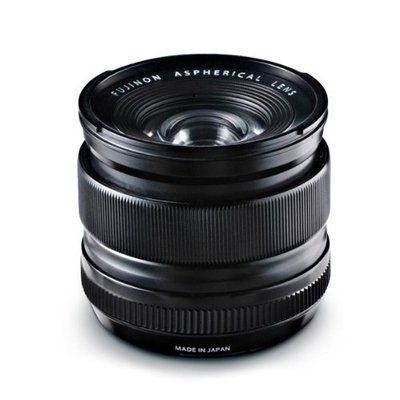
- Image credit: Martin Doppelbauer
Photographer Martin Doppelbauer decided to make a somewhat unbalanced comparison: The [shoplink 678]Fuji X-E1 (price & specs)[/shoplink] vs Canon’s EOS 5D Mark III (price & specs). Sounds unfair? Well, given the amazing performance of the X-E1 there are good reasons to be curious. He shot in RAW, using Capture One (Version 7.0.2) to develop the files of both cameras.
The review is not just a comparison between Canon’s full-frame champ and the X-E1, it is also a review that highlights the strengths and the weak points of the X-E1. Trying to shot at the same ISO settings showed some strange behaviour of the X-E1:
The true ISO value is considerably lower than the displayed value. I have performed some tests in comparison with the Canon EOS 5D Mark III, whose metering works particularly accurate according to dpreview.com. When the X-E1 is set to the same aperture and ISO values, the camera determines a much longer exposure time than the Canon. The extension factor was in average 1.75 (with variations from 1.62 to 2.0), which is equal to three quarter exposure stops (EV).
There are reproducible differences between the various ISO levels. The lower values from ISO 200 to 1600 are too weak by about two third exposure levels (EV) on average. The two highest values (ISO 3200 and 6400), however, deviate by one full exposure value (EV).
This means for example, that the X-E1 works with a real ISO 125 when set to ISO 200 and a real ISO 3200 when set to ISO 6400. This will provide for very good noise performance results in comparative tests in magazines or websites. In reality, however, the noise performance of the X-E1 is actually good but not as phenomenal as it seems. The Fuji always has to select almost double the ISO value compared to properly tuned cameras for a given scene, aperture and shutter speed.
So, what about the comparison? Martin writes:
The images of the X-E1 are of such a high quality that a comparison with the full-frame EOS 5D Mark III seemed reasonable. Both cameras were tested together with their “kit zoom lenses”, the 18-55mm f/2.8-4 on the X-E1 and the 24-105 L f/4 on the Canon.

Image on top: Courstesy of Martin Doppelbauer
Some information about the setting of his test:
For fair comparison the settings of both camera systems should be largely identical. This affects focal length, depth of field and exposure (ISO and shutter speed). Due to the different sensor sizes and Fuji’s exaggerated ISO numbers the matter is not so easy.
Focal length and depth of field (aperture) is converted to the crop factor, i.e. with 1.5. For example, a focal length of 23.3 mm on the X-E1 corresponds to the popular 35 mm on a full frame sensor. An aperture of f/5.6 on the Fuji gives a similar depth of field as f/8 at the Canon. I have always reduced the ISO values by 2/3rd steps on the EOS 5D Mark III.
All images were shot in RAW format and developed with Capture One 7.0.2. In some of the X-E1’s pictures the white balance was adjusted according to the EOS 5D, which I generally found slightly more accurate. All other parameters of the RAW software were left at their default values, which is particularly important when comparing noise performance.
The X-E1 can’t (obviously) hold up to the Canon EOS 5D Mark III. Never the less,it is interesting to see how well the Fuji performs, and how little is missing to get an almost full-frame like performance. Quoting Martin’s conclusion:
Regarding resolution: It is to be noted that the EOS 5D Mark III (with its low-pass filter) records visibly more details than the X-E1 (without the filter), even though the pixel count of the Canon in horizontal and vertical axis is just higher by 18%. Obviously the omission of the alias filter does not help the X-E1 to increase resolution much.
[…]
The X-E1 is a camera with impressive mechanical and optical quality and great usability. Its images come close in quality to the EOS 5D Mark III over a wide range of ISO settings.
It is pleasing to hold the camera and taking pictures is great fun. Operation of the X-E1 comes close to classical range finder cameras. The Fuji is perhaps not for casual shooters, but photographers who deliberately compose their images will have great pleasure. For them the slightly slow autofocus will not mean much. After all, it regularly nails sharpness right to the point.
I gladly confess that I was never annoyed by moiré artifacts in real shooting situations. If present at all they were rare and weak. [Update 2013-01-19: I was out shooting in the snow today. Snow-covered trees in bright sunlight are good for great pictures. But I also got a pretty significant amount of colored artifacts.
So, I let it up to you to check pics and to compare them. There are a lot (really a lot) of sample images in Martin’s post, as well as test shots of the Siemens star for better understanding of moiré and aliasing artifacts.
Some more X-E1 tidbits:
Fuji X-E1 price check: [shopcountry 678]
Canon EOS 5D Mark III price check: Amazon DE | Amazon FR | Amazon UK | Amazon US | B&H | Adorama
[via
Martin Doppelbauer]









 USER REPORT: My road to the Fuji X100 by Miroslav Mosko
USER REPORT: My road to the Fuji X100 by Miroslav Mosko  The First Frost (with the Fuji X100) — Thomas Fitzgerald Photography
The First Frost (with the Fuji X100) — Thomas Fitzgerald Photography  Antarctica with the [shoplink 678]X-E1 (specs&price)[/shoplink] and E-M5 | Cyril Dhénin
Antarctica with the [shoplink 678]X-E1 (specs&price)[/shoplink] and E-M5 | Cyril Dhénin  [/shoplink]
[/shoplink]